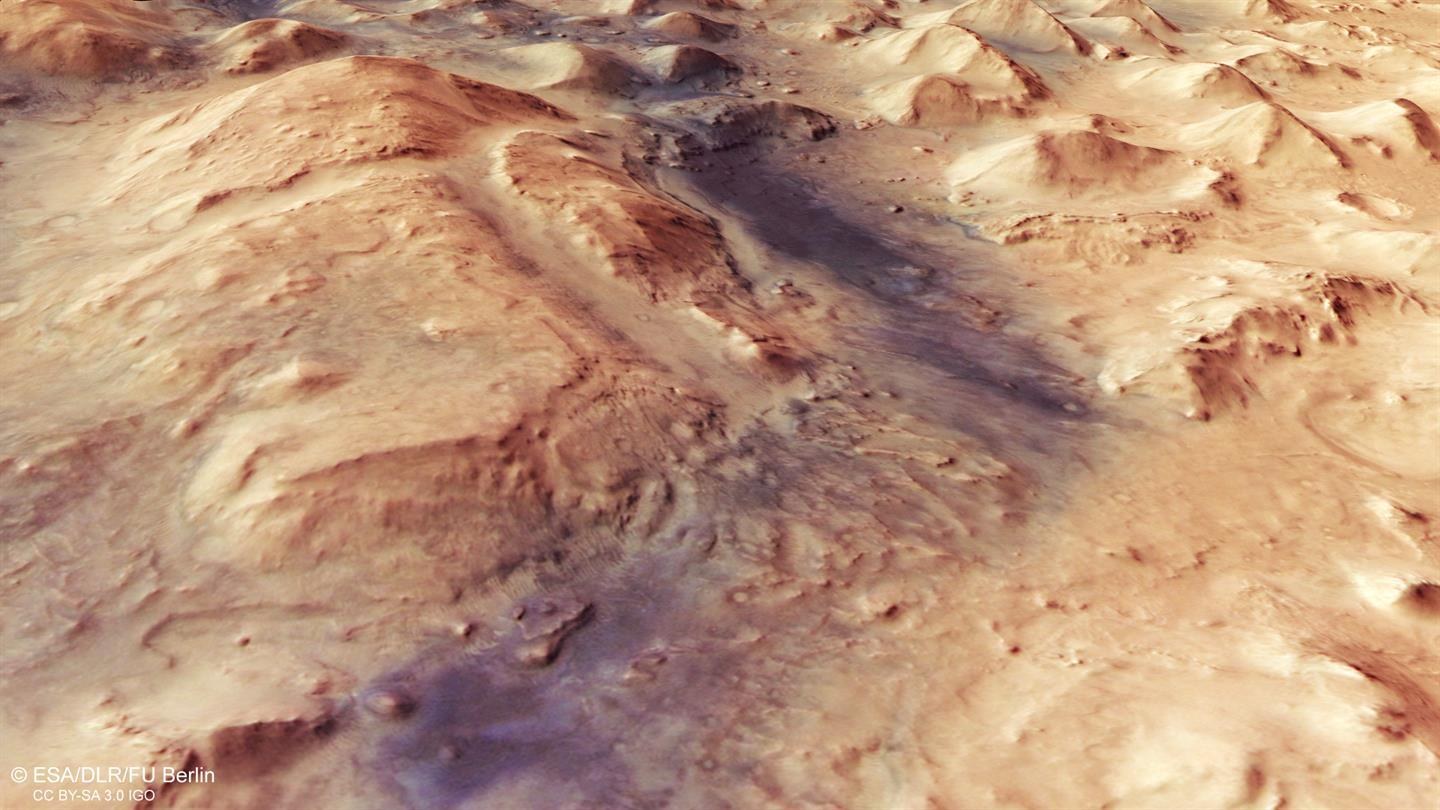Perspective view of a valley in the north of Nili Fossae, seen from the southeast
Perspective view of a valley in the north of Nili Fossae, seen from the southeast
The Nili Fossae region and the highly diverse transition zone from the Martian highlands to the northern lowlands is significant, both geologically and mineralogically. In the centre of the image it is possible to make out an old alluvial fan, presumably created by water flowing from a higher valley and the deposition of the material carried along with it into the wide lower valley. Spectroscopy experiments on board several orbiters have identified water-rich clay minerals at the edges and on the bottom of some valleys, which were probably produced by the weathering of volcanic basalt rocks and deposited in the watery environment there. However, Nili Fossae is also one of the few places on Mars where carbonates have been discovered. The most common carbonates on Earth are limestone (calcium carbonate or calcium magnesium carbonate, also known as dolomite) and the result of the sedimentation of calcified skeletons of dead microorganisms. The carbonate magnesite, or magnesium carbonate, has been found in Nili Fossae. The magnesium is thought to come from the silicate mineral olivine, the most common constituent of basalt.

